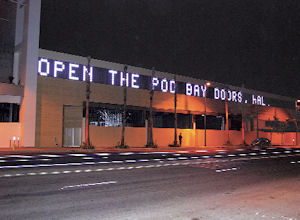The anchor space in the NoHo Commons retail center in North Hollywood, which has been vacant for nearly a year with the closure of a HOWS supermarket, has finally been filled. And with the planned opening of a bar and grill restaurant in another large vacant space, the NoHo Arts District area – a prized showcase of the city’s redevelopment efforts – is getting back on track after two serious setbacks. “A deal has been done; documents have been signed,” said Eric Reuveni, president of Los Angeles Commercial Real Estate Group who represented the owner of the property in the lease transaction. Reuveni would not disclose the name of the tenant due to a contingency in the lease agreement that still needed to be resolved, but he refuted speculation that the 32,392 square foot property, which would house the anchor tenant in the mixed use retail center, would be filled by another supermarket or grocery chain. HOWs, which moved into the space in 2007, departed in February citing slow sales at the development at Lankershim and Chandler boulevards that incorporates residential, retail, entertainment and parking space, and is part of a larger revitalization project. “We have a very young urban demographic, many do not know how to cook, so I think HOWs had a tough time adapting to that demographic,” said Reuveni. Now, with the addition of the new undisclosed tenant, the NoHo Commons retail center, owned by Redwood Partners Inc. and which encompasses 66,000 square feet of retail space, is finally 100 percent leased. This summer a dentist set up his new clinic in the other remaining vacant storefront, said Reuveni. Another landmark property in the NoHo Arts District will also soon end its yearlong vacancy. Bank building The single tenant property known as the Bank Building on Lankershim Boulevard has been leased to The Federal, a new bar and grill restaurant. “The Federal concept is very casual chic,” said Bob Akhavan, owner of the bank building and president of the NoHo Arts Business Improvement District. Akhavan said The Federal, which is owned by the Knitting Factory – a national music venue and concert house – will have an entertainment space on the second floor for live music and comedy shows. The bank building, which was built in 1926, housed a branch of Security Pacific Bank and operated as a bank up until the mid 60’s, according to Akhavan. The building has seen a myriad of tenants come and go including a restaurant-club that closed down after only a few months when a fire heavily damaged it nearly three years ago. Slow movement Revitalization efforts of the NoHo Arts District, led by the Community Redevelopment Agency of Los Angeles, were first approved in 2001 and have been slow to materialize. “The NoHo Arts District has taken a long time to come to fruition but it’s almost here, and I think a lot of people are very excited about it,” said Nancy Bianconi, owner of nohoartsdistrict.com, a company that does marketing for the NoHo Arts District and also conducts tours of the district for tourists. The latest phase of the revitalization project, part of a joint deal between the J.H. Snyder Company and the CRA/LA, includes a seven-screen movie theater, office space and restoration of the historic San Fernando Valley Eatery, Phil’s Diner. Last month restoration of the diner was completed and the facility was airlifted to its new location on Lankershim Boulevard where it will fit into the NoHo Commons movie theater, shopping and office complex being developed by J.H. Snyder. “We’re hoping to have the Laemmle theater soon, we still haven’t lost hope for that, but now we have the Art Institute [which recently moved in] which brings a youthful feel to the District; we have The Federal coming in, and we’re all waiting to see what’s going to be moving into the space where the HOWS used to be,” she said. The district known for its concentration of mixed-use residential development, close access to mass transit and the smattering of art and entertainment-related businesses, is quickly becoming a cultural tourist destination, said Bianconi. The district appeals to theater goers (there are 22 theaters in the District), and the “young hipster.” Many people moving into the district are in their 20s and 30s, she added.
